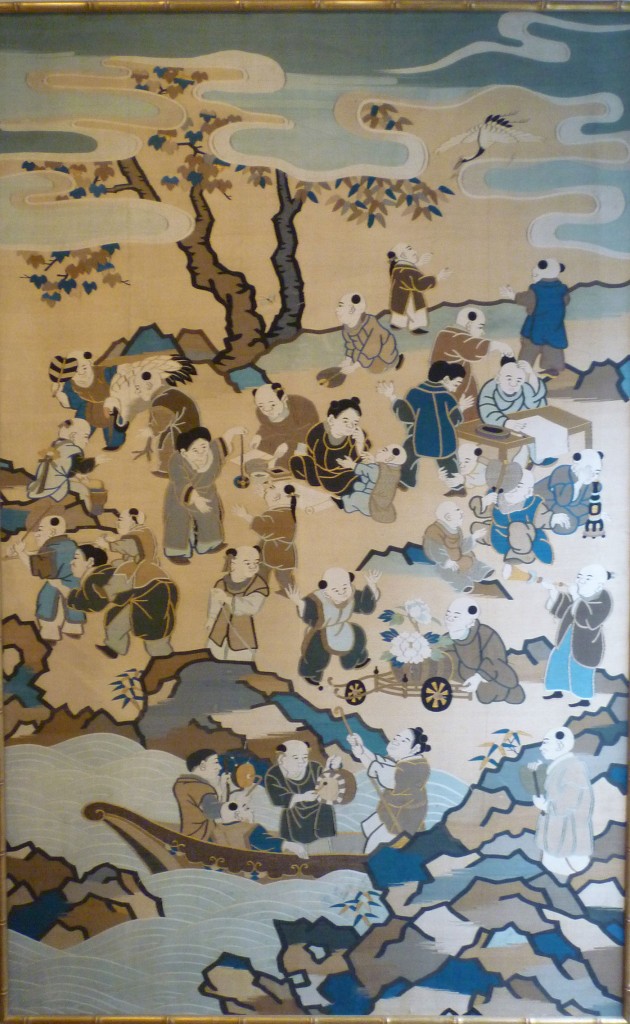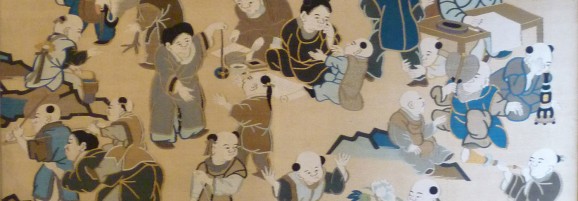Our 18/19th Century Japanese Kesi – On Display During Our Eastern Treasures Exhibition
Our 18/19th Century Japanese Kesi – On Display During Our Eastern Treasures Exhibition
This Japanese kesi tells the story of the happy children. It is a myth and folk tale going back to Chinese traditions that were taken over by the Japanese. The children represent happiness, the innocence of the youth and fertility. The children all have different toys and attributes that represent the common arts of the time, such as music, painting, calligraphy and so on. The main statement of the picture is the wish for a long happy life that at that time was guaranteed by many children. It is also a good example of the accumulation of different folk traditions. The kesi can be dated 18th/19th century and shows only minor wear. The technique of the kesi textiles was imported from China. Kesi (silk tapestry weave) became the vehicle for quintessentially Chinese aesthetics during the Song Dynasty (960-1279) in textiles which feature traditional phoenix and peony motifs or which emulate styles of Chinese brush painting. During the Ming (1368-1644) and Qing (1644-1911) dynasties, court robes, rank badges, and Buddhist and Daoist Kesi were all used to denote status and wealth, as well as to express religious devotion.
This outstanding piece can be seen in Zadah’s exhibition “Eastern Treasures” opening on the 3rd of November. The exhibition is a part of the Asian Art in London event, a very exclusive circle of exhibitors which show their Asian collections from the 3rd till 12th November. Our opening takes place in 4 Marylebone Street at 6 to 9 pm.




